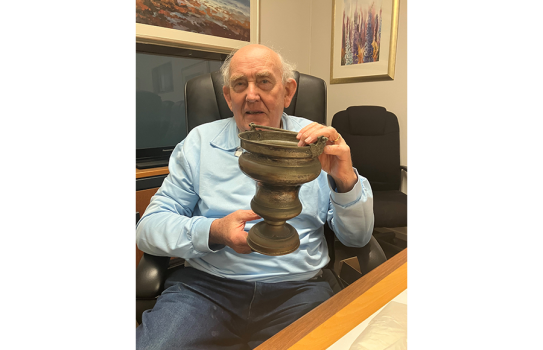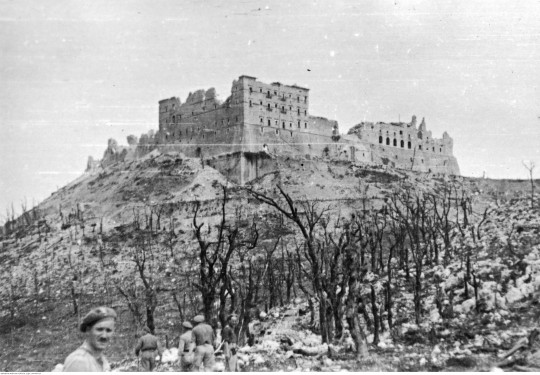Soldier’s relic to be returned to Monte Cassino monastery
A religious souvenir taken after the Cassino monastery in Italy was bombed, is to be returned by the nephew of the war hero who brought it home.
23 September, 2024
Lower Hutt-based Malcolm Sime had always heard about what his mum called a ‘chalice’ that had been brought home from the bombed monastery by her brother, Military Cross recipient Robert Knox.
New Zealand troops had significant involvement in the Battles of Cassino, the 80th anniversary of which were commemorated earlier this year.
On 15 February 1944, 255 aircraft dropped a total of 576 tons of high explosive on or near the monastery.
The ‘chalice’ is thought to be more an aspersorium, the vessel priests use to hold holy water that is sprinkled during religious ceremonies.
It was held by a relative, along with Knox’s medals and other special war-time memorabilia such as the silk maps of Italy he wore under his uniform. The items were given to Mr Sime as he was Major Knox’s closest living family member.
Mr Sime, 75, plans to travel to Italy in September with his son and return the vessel to the Monte Cassino monastery. The medals and other items will be loaned to the National Army Museum.
“It’s going back to where it rightfully belongs,” he said.

Malcolm Sime holds up the Cassino relic.
Major Robert Knox:
Major Robert Reid Knox was a member of 2nd Company of the 22nd New Zealand Motorised Battalion. In December 1943 2 Company was leading the advance of the battalion along the road from Castelfrentano to Guardiagrele in Italy. Then a Captain, Knox had been wounded two days previously but remained with the unit.
On reaching a demolition covered by enemy fire the acting Officer in Command was killed. Captain Knox moved from the rear of the column and took command. Accompanied by one man he reconnoitered forward along the road, located a minefield, destroyed an enemy motorcycle patrol, and located and killed an enemy patrol of four men. He continued his reconnaissance until he made contact with the main delaying enemy forces on a further demolition.
Captain Knox remained in command of his Company until it was relieved, during which time it was subjected to continuous and heavy shelling and machine gun fire
He was invalided home because of ill health. He died in 1985, aged 74.
